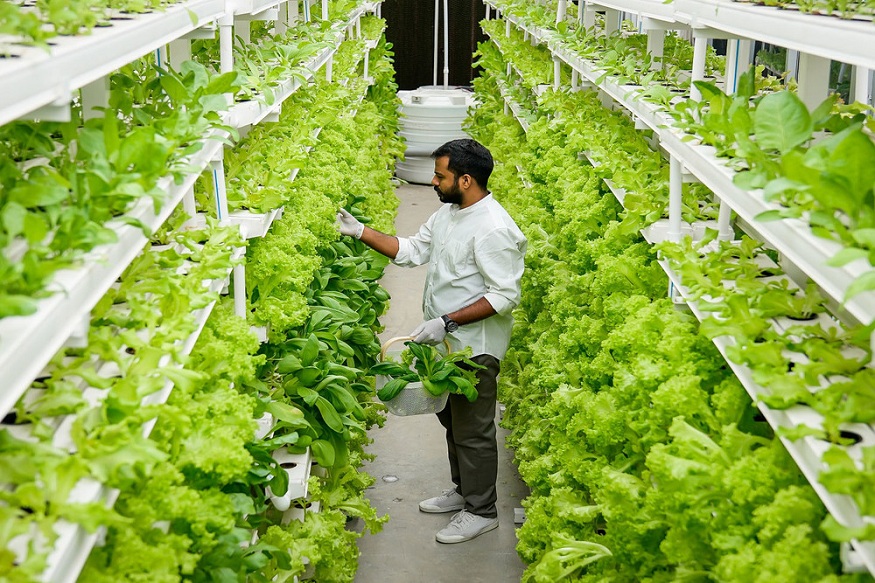
Vertical Farming: A Feasible Solution
As the world’s population continues to grow, innovators are seeking for new ways to feed everyone while minimizing the impact on our land and water resources. Vertical farming is an example of a solution that has been used all over the world.Food crops may be conveniently farmed in urban settings using Vertical Farming, which involves planting in vertically stacked layers to save space and utilize minimal energy and water for irrigation.
Professor Dickson Despommier invented the contemporary concept of vaertical farming in 1999. His idea was to grow food in urban areas, saving time and money by reducing the distance and time it took to transport food from rural areas to cities.He wanted to cultivate food in urban areas so that fresher meals may be provided faster and at a lesser cost. Vertical farming is thus defined as the cultivation and production of crops/plants in vertically stacked layers and vertically inclined surfaces.
Vertical farming has a number of features that make it a potential agricultural technology for the future. The land requirement is relatively low, water usage is 80% lower, water is recycled and stored, pesticides are not used, and high-tech farms are not reliant on the weather.Farming within the constraints of a city is now possible with the help of a vertical farm. When farms are close by, the produce is delivered swiftly and is always fresh, as opposed to the chilled produce seen in stores. Reducing transportation costs and emissions lowers the cost of fossil fuels and, as a result, lowers transportation spoilage.
The vertical farming sector has grown significantly in recent years. One of the main factors driving this rise is a growing understanding of the advantages of vertical farming. Because vertical farming is weather-independent, farmers may attain a steady annual crop production without having to worry about bad weather. Furthermore, it allows them to produce more in a less space. Vertical farming yields 240 times more than conventional farming while requiring 99 percent less land and 98 percent less water.For city people, vertical farming is a fantastic choice. It has the ability to improve global food security while also combating environmental issues. A severe weather disaster would have little effect on the yield. It has the advantage of being able to reduce the amount of cooling and heating water required by the interior temperature. It helps to alleviate poverty, ensure food security, and improve human well-being. Food demand and supply, urban population and density, technological innovation, water and energy availability, and climatic conditions all influence the success of vertical farming.
In the future years, the need for vertical farming will continue to rise as the desire for sustainable agricultural ecosystems grows. The utilization of controlled environmental resources and agriculturally unfit places, primarily skyscrapers, shipping containers, and derelict warehouses, has become possible thanks to technological improvements. In the next years, a growing emphasis on recapturing evaporated water and recycling products in order to reduce waste is expected to boost the vertical farming market’s growth.


